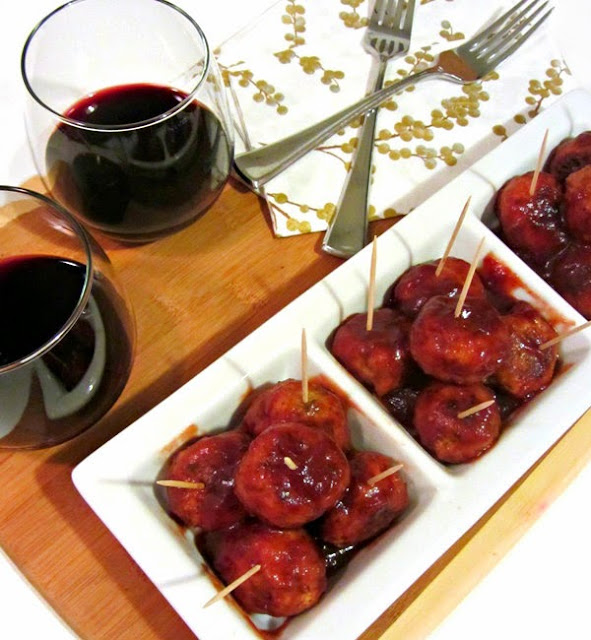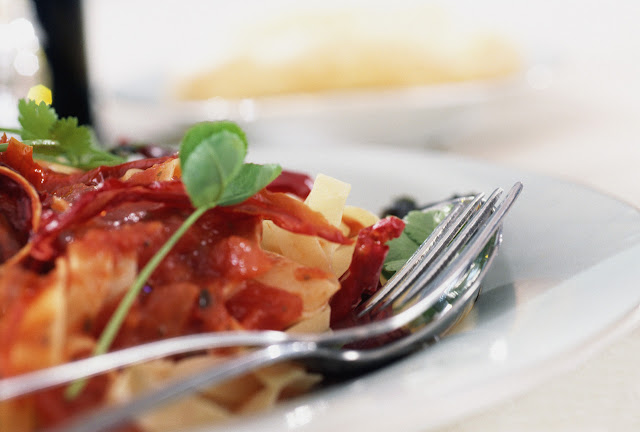Optimum Food Choices: Part Two
 NUTRITION NEWS
NUTRITION NEWSIn the last real food post, Real Food - Optimum Food Choices: Part One, though I mentioned that I would be covering fats and oils, cheese and breakfast cereals next, I will focus on fats and oils, and just give a brief review of cheese and breakfast cereals.
This post, hopefully, will help you to determine if a lipid (a fat or oil) is healthy to consume or not. (What I will post here about fats is not consistent with what we hear in the food industry, popular media and even from our doctors.)
When I first began to read about real food - fats in particular - I did a double-take in my mind and was very doubtful about what I was reading. If you have read my first post on real food, then you know that I was eventually convinced, and the wonderful healing results that accompanied eating real food for two months was all I needed to commit to embracing a complete change in lifestyle as far as diet was concerned. Good fats and oils have been part of that diet.
"But isn't any fat bad for us?", I hear you asking. We hear it everywhere that fat should be avoided and I used to believe that. While eating low-fat or no-fat foods, I had no energy, gained weight consistently, had unrelenting pain from osteo-arthritis, dry skin and more. Now that I eat more fat (all good fat) than is recommended, I have more energy than ever, have stopped gaining weight, my cholesterol is good, the pain has decreased dramatically and my skin is recovering.
This is simple, like last time with the apple. Think about building a fire. You start with kindling, then you add medium-sized branches, then you add the big, long burning oak logs. The kindling burns quick and hot, but is gone within minutes, yet not before the medium branches are aflame. These last long enough to get the big, oak log burning.
Carbohydrates or starchy foods (and I am talking about good carbs now, like brown rice, whole grains, legumes, beans, and starchy vegetables, etc., not sugar, white flour, white rice, etc.) are like kindling. They provide quick energy, but burn off fast in our bodies. Protein is like the medium-sized branches, which provide energy for a longer period of time. But fats, like the big, slow burning oak logs, provide sustained energy and also tell our tummies and brains that we are satisfied for hours. Every morning I eat a good breakfast at about 7:30, with plenty of good fat. I do not even think about eating again until around 1:00 in the afternoon. Food is not at all on my mind. Good fat really satiates our hunger.
Besides providing long lasting energy and satisfaction, fats are needed in the body to produce many functional, structural and energy biochemicals that are absolutely essential to your health. These include hormones, cells and cell membranes. Healthy fats are also needed for the absorption of fat-soluble vitamins and they slow down the rate of absorption of carbohydrates and protein that you consume. In other words, healthy fats keep the kindling (carbs) and medium sized branches (protein) burning longer. This is why you stay satisfied longer.
But not all fats are healthy. Generally speaking, fats will either build, repair and supply energy to our bodies or they will damage our bodies. There are good fats and there are bad fats. So how can you tell if a fat is good or bad? We will get to that, but first we need to review a little.If you remember in the last post about optimum nutrition, oxidation, free radicals, free radical damage, etc. was presented. (Read that now if you have not already done so by clicking on this sentence.)
Briefly, an apple, when cut in half and left exposed to air, heat and light becomes damaged. It turns brown. This is called oxidation. Free radicals are present in damaged food. For lack of being able to repeat the technical, scientific jargon, I think of free radicals as out-of-control, marauding rebel cells that go about causing harm to healthy cells. That is actually exactly what they are and what they do. Thus, damaged food, when eaten, causes damage to our bodies.
Now, back to determining if a fat is good or bad. This depends entirely on its stability - its ability to resist oxidation or not. Contrary to what we have been told for quite some time now, fats and oils are not good or bad depending on their saturation level, ie. all saturated fat (solid fat) is bad for you and unsaturated fat (liquid fats) are good for you. This is simply not true!
Diana Schwarzbein, M.D., a brilliant endocrinologist in Southern California says in her book The Schwarzbein Principle II - The Transition, "The definition of a healthy fat has nothing to do with whether it is saturated or mono- or polyunsaturated, but everything to do with whether or not the fat is damaged." (Read about Dr. Schwarzbein's experiences that brought about her successful treatment of degenerative diseases.)
The most unstable of all oils are the polyunsaturated oils - the liquid oils. A polyunsaturated fat is liquid at room temperature and also when refrigerated. These oils react quickly and dramatically to air, heat and light, sustaining extreme damage when processed. I remember when polyunsaturated oils were touted as being the most healthful of all oils. I used them to cook with when my children were growing up and avoided saturated fats - the fats that have been demonized by the food industry, etc.
Processed polyunsaturated vegetable oils are some of the worst culprits for causing damage to our bodies. Just like an apple, when the seed - let's say corn seed - is broken open and exposed to air, heat and light, all parts of this oil begin to oxidize. The oil from the seed is extracted by high, prolonged heat. Then the last 5% of the oil that still remains in the seed is pulled out by a solvent called hexane gas (similar to gasoline). When all of the oil is extracted, the hexane gas is boiled off (residues always remain, however, and it is found in human breast milk).
After this destructive process, the oil looks gray and murky and smells rancid, as it is, so it is deodorized and bleached, for no one would buy it if it was left as is. This is the pretty, sparkling golden corn (soybean, safflower, etc.) oil that you pick up and pay money for at the supermarket. When you take it home and heat it in a pan, it is further damaged.
As damaging as heat-processed polyunsaturated fats are, there is one fat that is worse. Trans-fats are made from already damaged polyunsaturated fats. In processing polyunsaturated fats into trans-fats, the molecules of the fat are rearranged, making them even more dangerous to eat. Our bodies do not know what to do with these fats, also appropriately called "funny-fats", so they are always stored in the fat cells. Eventually, after eating this way for a period of time, our cells actually become trans-fatty in nature.
Monounsaturated fats, like olive oil, are less susceptible to damage from air, heat and light. A monounsaturated fat is liquid at room temperature and semi-solid when refrigerated. Good olive oil (this is defined below under Food Review) can be used to cook with, but only when using moderate heat. This oil does sustain damage from high-heat cooking and therefore should not be used for that purpose. (To read more great information regarding good and bad fats see these articles at westonaprice.org )
By far, the most stable of oils are the saturated fats. Saturated fats are solid (some softer than others) at room temperature and hard when refrigerated. Because of their composition, they are not easily damaged by air, heat and light.
Butter is stable and can be left unrefrigerated without it turning rancid (or being damaged). It is also highly nutritious. (To read about the remarkable nutritional value of butter see this article at westonaprice.org) It can be used to cook at higher heats than olive oil, but it should never be heated to the point of smoking. Any stable fat or oil that has been heated to that degree has been damaged and should not be eaten.
Other good saturated fats include:
Beef and lamb tallow
Lard
Chicken, goose and duck fat
Coconut and palm oils
Good monounsaturated and polyunsaturated fats include:
Sesame oil
Cold pressed olive oil
Cold pressed flax oil (never heat)
Marine oils (from deep, cold waters)
FOOD REVIEW
Butter & Other Oils and Fats: Extra virgin, cold or expeller expressed oils, such as olive, flax seed, peanut, sesame, high-oleic expeller expressed monounsaturated safflower or sunflower oil (these two are good for making mayonnaise) (refrigerate all of the above in dark bottles); extra virgin organic coconut and palm oils (fine to keep at room temp); organic, (raw is best) butter from grass-fed cows, duck fat, suet (from beef); never processed polyunsaturated, including canola oil or partially-hydrogenated (or hydrogenated) oils, such as shortening and, margarine, and never soybean oil even if it is cold-pressed because of a myriad of toxins, carcinogens, and anti-nutrients, and phyto-estrogens. *WFM; TJs; FC; R
Breakfast Cereals: organic whole unprocessed grains such as whole oats, (whole grain cereals should be soaked in water and lemon juice or liquid whey for 8 hours or longer to neutralize phytic acid and other anti-nutrients), brown rice cereal (does not need to be soaked); never processed cold cereals, even all so-called? healthy? ones ? all are very toxic because of the harsh processing they undergo and have caused rapid death in test animals due to the toxins they contain.
*WFM; TJs; FC; R
Cheese: 1) organic, raw, whole milk or 2) organic, pasteurized whole milk cheeses made from cow, goat, and/or sheep milk; stay away from aged cheeses as the fats in them are compromised (rancid). *WFM; TJs; (Ask at WFM as there are several places where they are found.)
*WFM = Whole Foods Market
TJs = Trader Joes
FC = Food Co-op (email me about this if you want more info)
R = Raley's Food Stores








Comments
Post a Comment
Your ideas and input are valuable to me. I would love to hear from you!